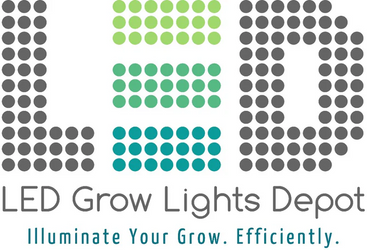Free Shipping in the USA on nearly all items!
Limited phone hours during the Holidays! Call us: 888-611-9305
Free Shipping in the USA on nearly ALL items! Limited phone hours during the Holidays!
We score 4.8 out of 5 based on 5742 reviews. Browse Reviews.
Since 2009 or so, growers have stated that LED grow lights work very well for the vegetative growth stage, but are not sufficient for the flowering stage. In other words, growers are claiming that "LEDs produce smaller flowers and/or yields than HPS". Is this true? And if so, why?
The problem with growers switching to LEDs from a traditional grow lamp is that that they do not adjust their variables, such as fixture height or other environmental factors during their grow. Using an LED grow light at the same height as an HPS fixture, won’t deliver enough PAR to the plants for optimal flower development. Many LED grow lights have a recommended distance of 18” or less during flower. And if temperature, nutrients, and watering variables and timing are not adjusted, or at least considered, these variables could affect the yield.
Another problem is subpar manufacturers can mislead customers by claiming an LED light will cover a particular area (say 4'x 4'), when in fact, it will not sufficiently cover the full footprint during flower. To correct this issue, the light can be moved closer to the plants during flower so the fixture will deliver a higher PAR concentration. However, the size of the light footprint will be reduced.
Lastly, the advertised wattage of some LED grow lights, like some found on eBay, is higher than what the LEDs actually pull from the wall. For example, an LED grow light is advertised at 1000 watts, but what does this refer to? Does it replace a 1000 watt HID lamp, does it actually draw 1000 watts, or is 1000 watts the chip wattage multiplied by the number of chips (10-watt chips x 100 chips = 1000 watts). Since LEDs are underdriven to extend their lifetime, it is very unlikely that this grow light is an actual 1000 watts, and if it is 1000 watts (as measured at the wall), then the diodes will burn out well before 50,000 hours since LED lifetime is reduced by increased temperatures.
Smaller buds and yields could also be due to a weak spectrum, but more often than not, they are a result of insufficient light intensity and penetration. Most (all?) LED grow lights on the market have a spectrum that will grow very well.
Bud size may be increased through the following recommendations:
Following these recommendations will help you increase your yields with LEDs.
How are your yields with LEDs? Let us know in the comments below...
{"one"=>"Select 2 or 3 items to compare", "other"=>"{{ count }} of 3 items selected"}

Comments
Leave a comment